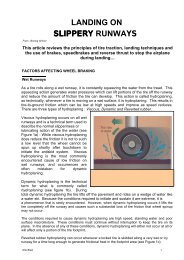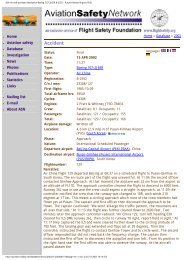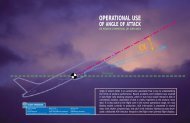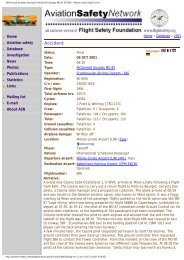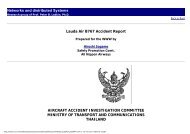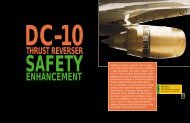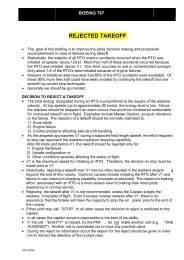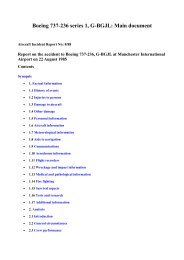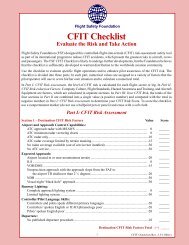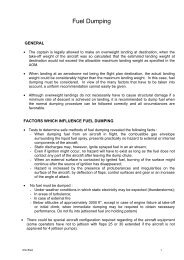A Description of Convective Weather Containing Ice ... - Leonardo
A Description of Convective Weather Containing Ice ... - Leonardo
A Description of Convective Weather Containing Ice ... - Leonardo
Create successful ePaper yourself
Turn your PDF publications into a flip-book with our unique Google optimized e-Paper software.
Using On-board <strong>Weather</strong> Radar to Detect Crystals<br />
<br />
<br />
<br />
<br />
<br />
Radar echoes have not been reported by the pilot at the location<br />
<strong>of</strong> the airplane in these engine events.<br />
In many cases, the aircraft was diverting around red echo regions<br />
<strong>of</strong> thunderstorms, at temperatures too cold for liquid water to<br />
exist<br />
Radar responds to particles according to the 6th power <strong>of</strong> their<br />
diameter, and is therefore able to detect large particles. Small<br />
particles, such as those 40 micron diameter particles in high<br />
concentrations near thunderstorms, are invisible to pilot’s radar,<br />
even though they may compose a major fraction <strong>of</strong> the total mass<br />
<strong>of</strong> the cloud.<br />
Regions <strong>of</strong> hail, graupel, and ice crystal aggregates convected to<br />
high altitude, can still display high reflectivities due to their large<br />
size. Research indicates these are very localized regions at high<br />
altitude.<br />
Areas <strong>of</strong> high mass concentration invisible to the radar can still<br />
exist away from these high reflectivity areas. This is graphically<br />
represented in the next figure.<br />
8<br />
Boeing Proprietary Data



